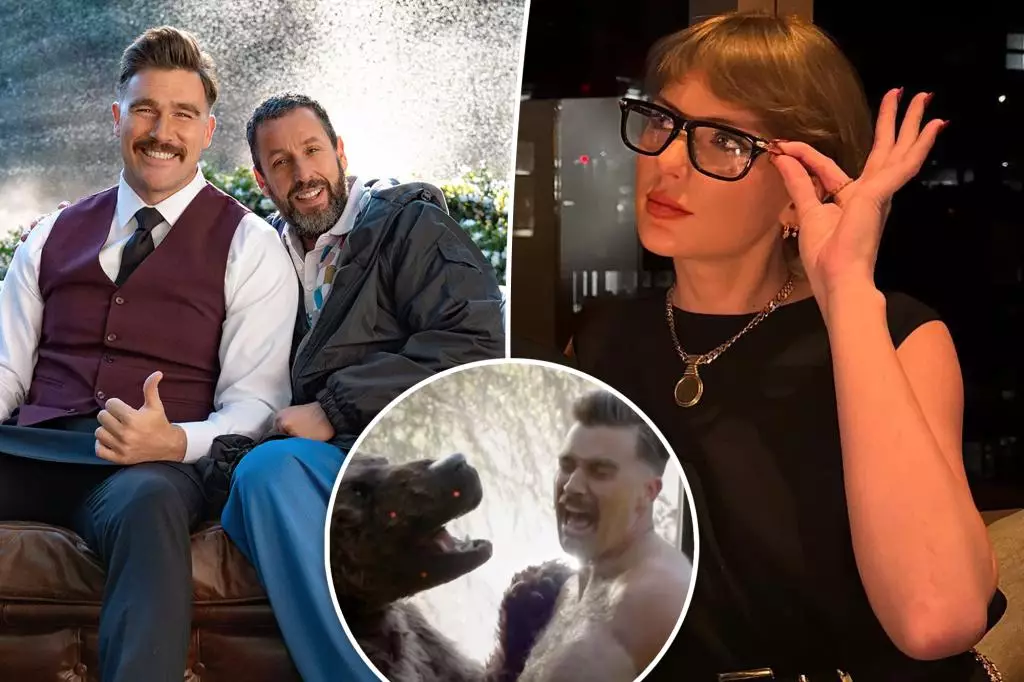In the realm of modern entertainment, fan theories have transcended mere speculation to become a dynamic force that shapes perceptions and fuels conversations. The recent whispers about Taylor Swift making a clandestine cameo in “Happy Gilmore 2” exemplify this phenomenon. Thanks to social media platforms like Twitter and Instagram, fans now possess unprecedented power to unearth hidden details, connect dots that industry insiders may overlook, and create narratives that resonate with global audiences. These theories are often amplified by playful responses from studios and actors, blurring the lines between official content and fan-driven storytelling. The speculation that Swift, embedded in a bear costume, secretly appeared in the comedy underscores how fandoms can transform simple behind-the-scenes clips into captivating folklore. Such activities underscore a shift in entertainment culture: fans are no longer passive consumers but active participants in the myth-making process.
The Symbiotic Relationship Between Celebrities and Fan Engagement
The intertwining of celebrity persona and fan interaction is more pronounced than ever. Taylor Swift’s endorsement of “Happy Gilmore 2,” coupled with her playful social media posts, exemplifies how stars are leveraging their influence to foster intimacy and hype. Her enthusiastic recommendation — calling it a “must-watch” — elevates the film’s visibility, especially among her vast following. Conversely, actors like Adam Sandler, who openly praise Swift’s kindness and character, reinforce the notion that Hollywood personalities are creating a reciprocal ecosystem of support. This mutual admiration feeds into the narrative that celebrity relationships and projects are interconnected, adding layers of authenticity and intrigue. When fans see a beloved singer endorsing a film featuring her boyfriend, Travis Kelce, they instinctively engage, weaving a web of pop culture references that elevate the entire experience. The playful banter—such as Netflix’s emoji reply—further solidifies this community-centric engagement, transforming mere promotional efforts into shared cultural moments.
The Blurring of Reality and Fiction in Celebrity Narratives
What is particularly fascinating is how these rumors and theories reinforce the increasingly porous boundary between reality and fiction in celebrity culture. The suggestion that Taylor Swift appears as a bear in a comedy film, whether true or not, stirs imaginations and sparks debates about authenticity. This plays into the wider narrative of celebrities as figments of collective imagination, with fans willing to accept even the most outlandish possibilities as truth. Moreover, the casual nature of such comments, partially encouraged by social media responses, amplifies the perception that stars are always in on the joke, creating a self-perpetuating circle of speculation. It signifies a new era where fans are eager to decipher hidden messages, and celebrities seldom discourage this curiosity, knowing that it feeds engagement. The final effect is a cultural landscape where reality, entertainment, and fandom are seamlessly intertwined—each reinforcing the other in a perpetual cycle of fascination.
The Influence of Celebrity Relationships on Pop Culture Narratives
The relationship between Taylor Swift and Travis Kelce exemplifies how celebrity romances are transforming into grand narratives that dominate media and fan discourse. Swift’s support for Kelce’s burgeoning acting pursuits and their shared moments on social media are not simply personal milestones but tools to foster public intrigue. These interactions serve to humanize stars, creating relatable stories of love and support that resonate deeply with audiences. Furthermore, Kelce’s increasing visibility through this relationship elevates his profile beyond sports, turning him into a significant pop culture figure. The couple’s relationship narrative often feeds back into their professional projects, blurring personal and professional boundaries and enriching public interest. For fans, this dynamic offers a sense of connection, as they witness the union of two influential figures whose lives are actively shaped and celebrated through social media storytelling—a testament to the new age of celebrity-centric storytelling.
While some may dismiss fan theories and social media antics as trivial, they actually reveal vital insights into how fame is evolving. Today’s celebrities are no longer distant icons but avatars in a continuously animated story, with fans actively shaping their narratives. Whether it’s speculating about hidden cameos or dissecting romantic gestures, these interactions create a shared cultural canvas where everyone can participate. The appeal lies not only in the content itself but in how it informs a collective understanding of celebrity omnipresence. As stars like Swift and Kelce embrace these new dynamics, they redefine what it means to be a modern icon: accessible, relatable, and forever intertwined with the passions of their followers. This is a landscape where storytelling transcends traditional boundaries, delivering entertainment that is as much about community and connection as it is about fame itself.

